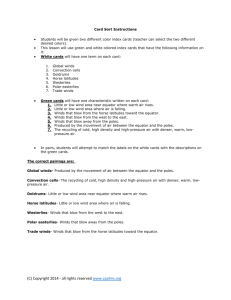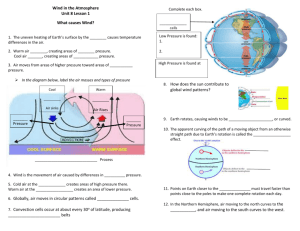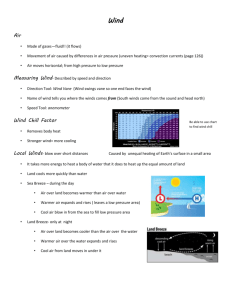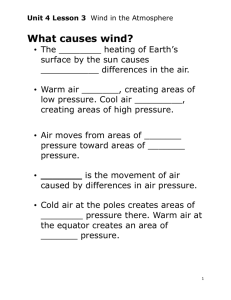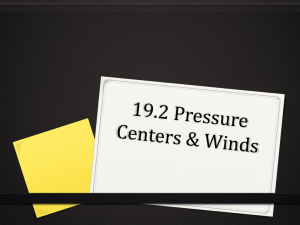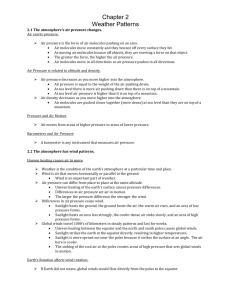Wind Notes
advertisement
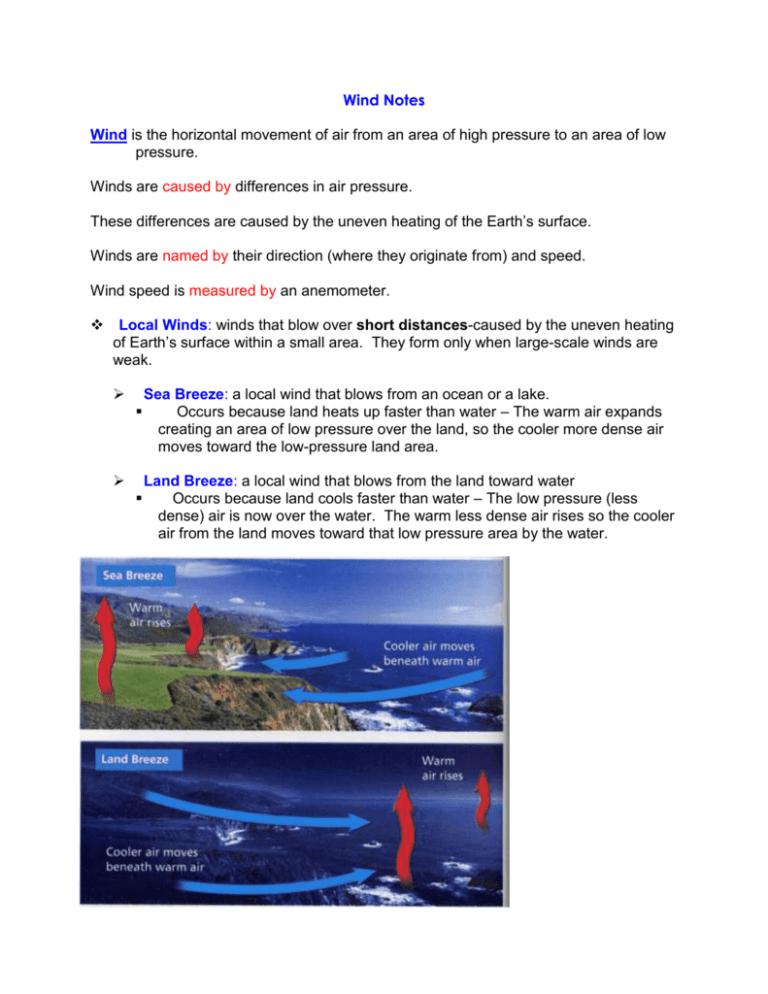
Wind Notes Wind is the horizontal movement of air from an area of high pressure to an area of low pressure. Winds are caused by differences in air pressure. These differences are caused by the uneven heating of the Earth’s surface. Winds are named by their direction (where they originate from) and speed. Wind speed is measured by an anemometer. Local Winds: winds that blow over short distances-caused by the uneven heating of Earth’s surface within a small area. They form only when large-scale winds are weak. Sea Breeze: a local wind that blows from an ocean or a lake. Occurs because land heats up faster than water – The warm air expands creating an area of low pressure over the land, so the cooler more dense air moves toward the low-pressure land area. Land Breeze: a local wind that blows from the land toward water Occurs because land cools faster than water – The low pressure (less dense) air is now over the water. The warm less dense air rises so the cooler air from the land moves toward that low pressure area by the water. Global Winds: winds that blow steadily over long distances-caused by the uneven heating of Earth’s surface over a large area. Global Convection Currents – The sun’s rays hit the equator directly causing extremely high temperatures, the poles are much cooler. This large difference in temperature causes air pressure near the equator to be low and greater near the poles. This difference in pressure causes giant convection currents called global winds. The Coriolis Effect - Since the Earth rotates from west to east the winds do not move in a straight line but are actually curved. Global winds from the north curve toward the right (west) and global winds from the south curve toward the left (east) Global Wind Belts: The constant areas of calm and wind belts across the globe Areas of Calm Doldrums: Along the equator the air is a constant warm temperature which is constantly rising. There is little or no lateral movement (no wind) Horse Latitudes: At about 30°latitude, the air stops moving toward the poles and sinks. So, once again there is little or no lateral movement (no wind) Areas of Wind Trade Winds: Blow between the equator and 30°latitudes, both north and south. They blow from the northeast and the southeast toward the west. These constant steady winds are what early sailors depended on. Prevailing Westerlies: Between 30° to 60° latitudes north and south. They blow from the northwest and the southwest toward the poles in an easterly curve. Polar Easterlies: Blow cold air away from the poles – They meet the prevailing westerlies at 60° latitudes and produce the polar front. This mixing of cold and hot air has a major effect on weather in the U.S. Jet Streams: Upper troposphere to lower stratosphere (about 10km up) Bands of high speed winds. Blow from west to east in a wavy pattern



